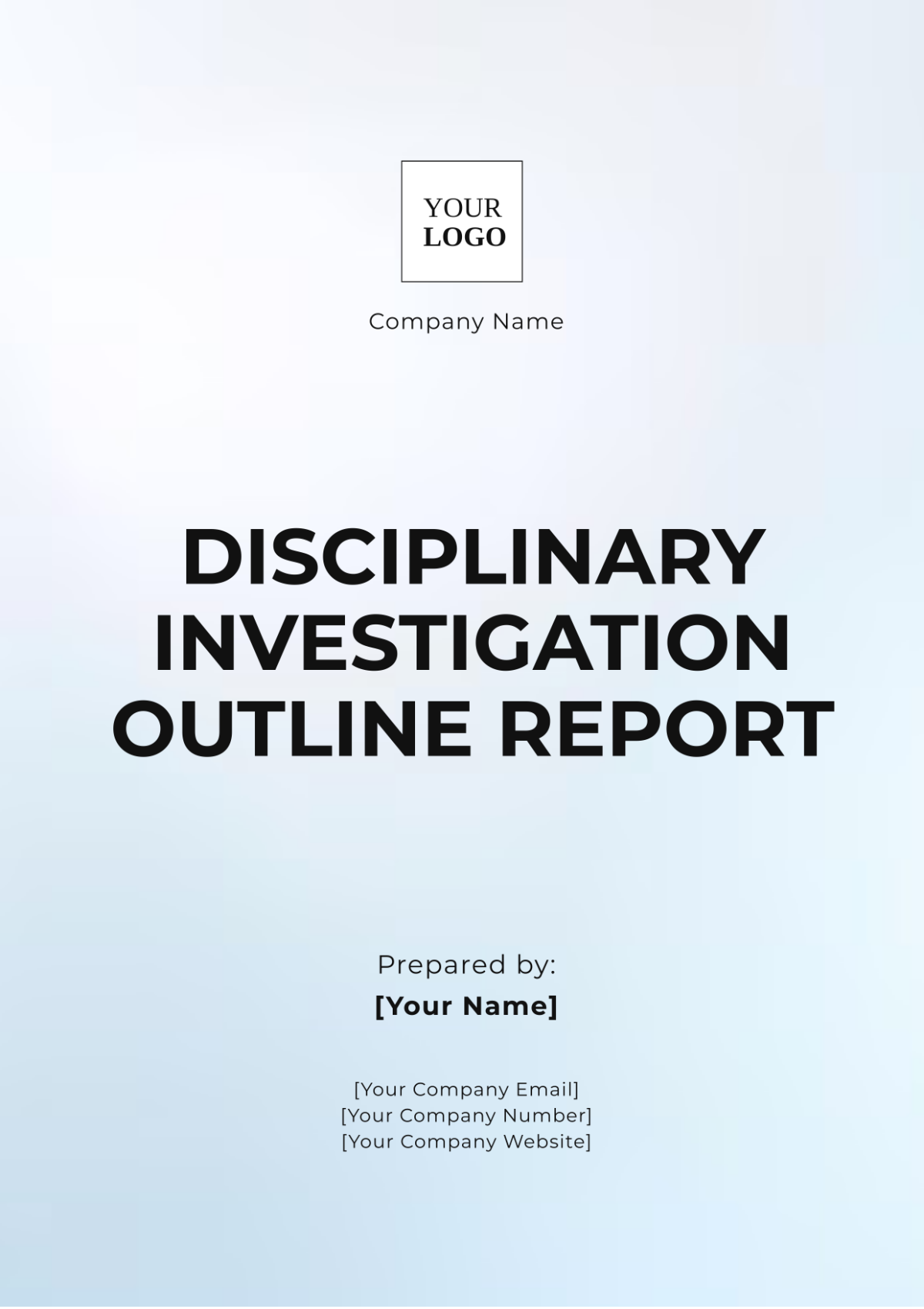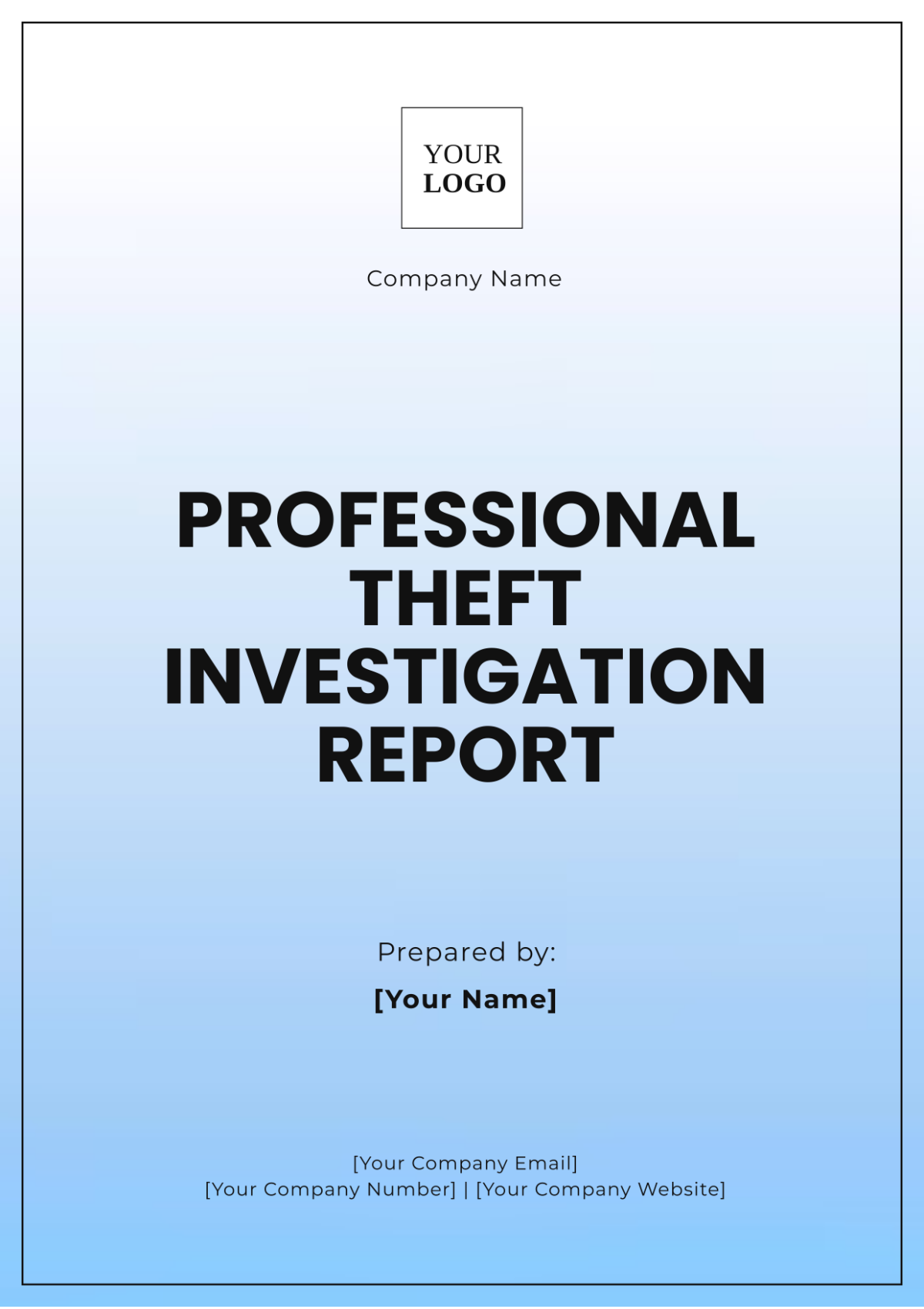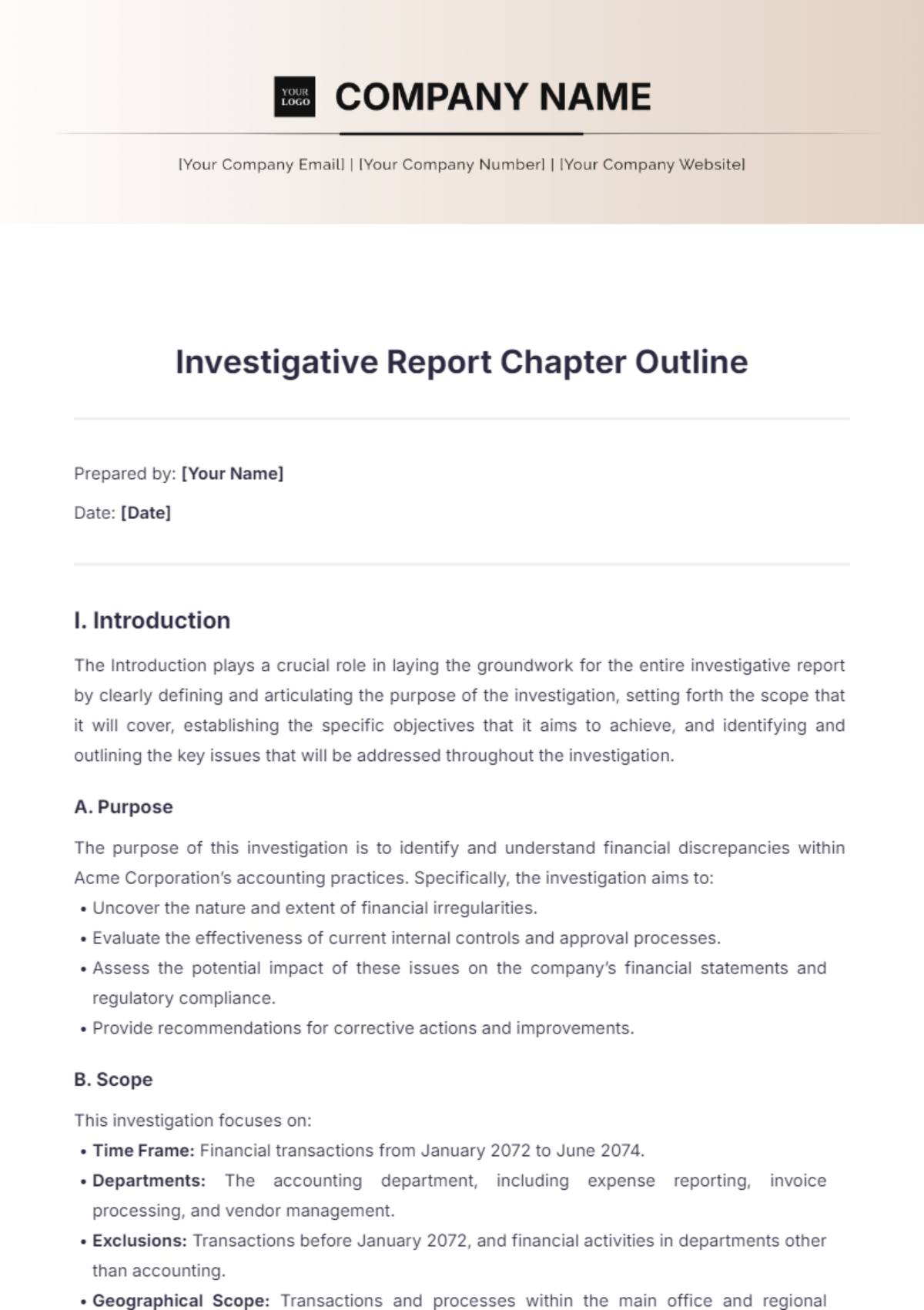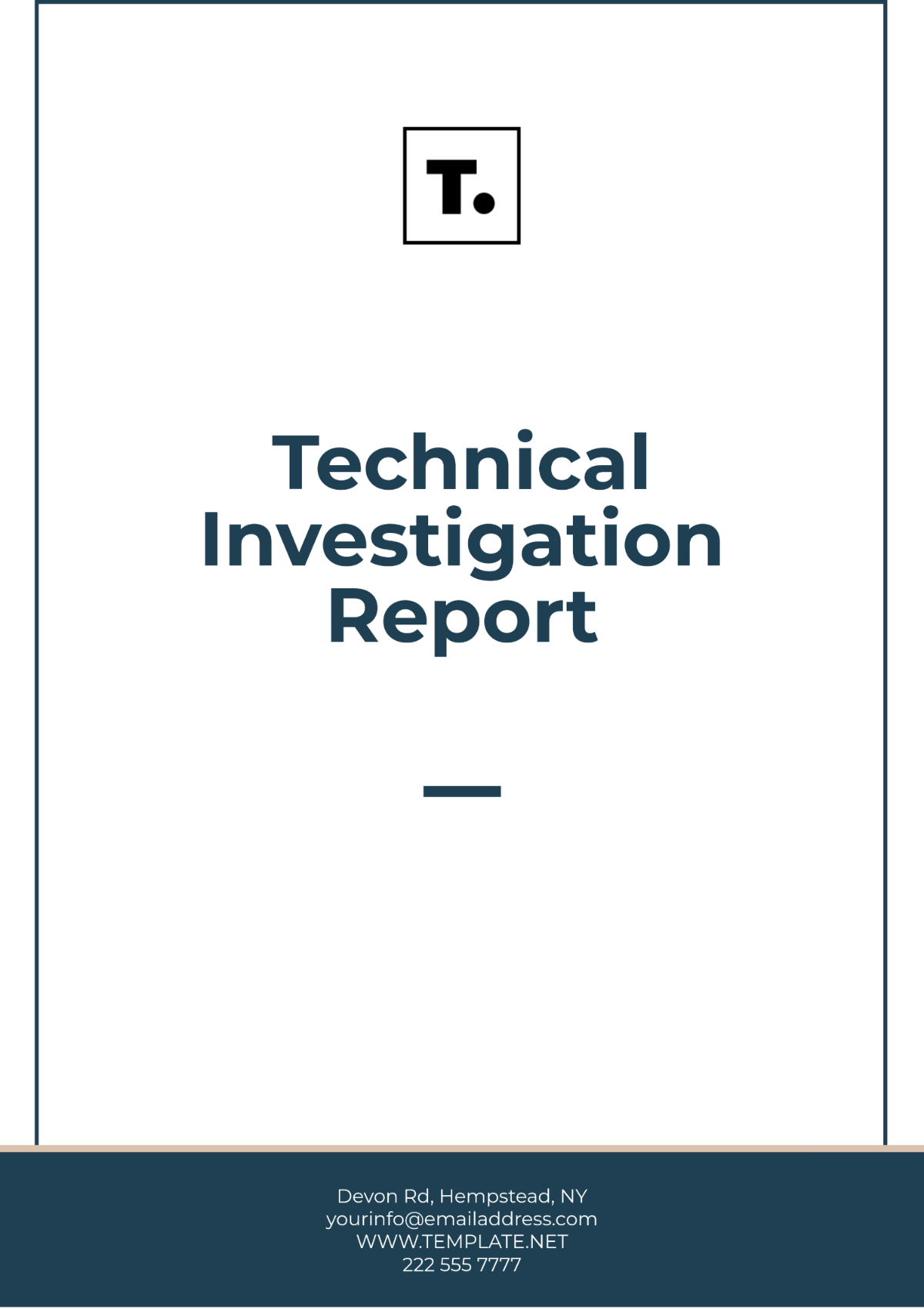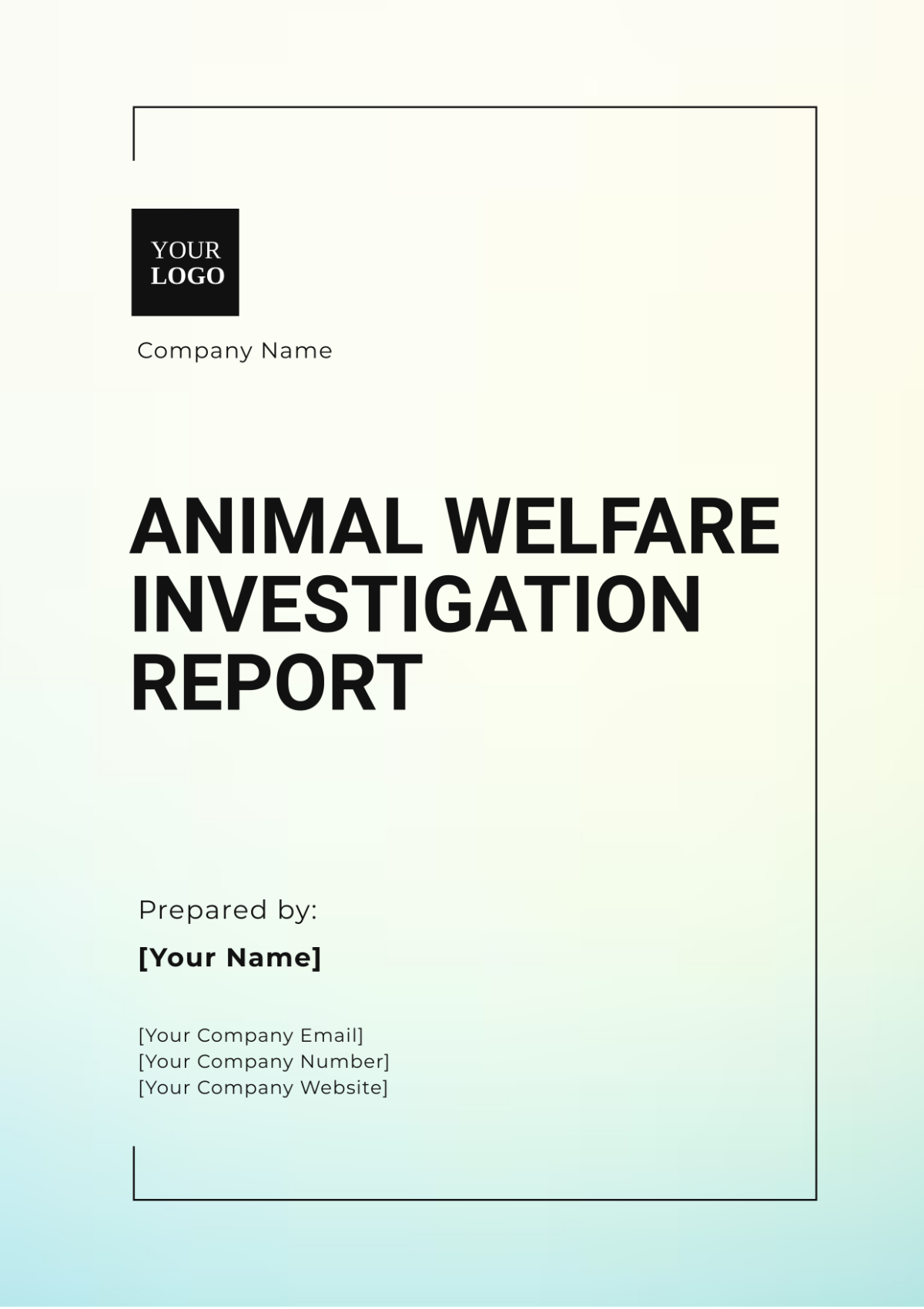Investigation Report Outline
I. Introduction
Investigator: [YOUR NAME]
Email: [YOUR EMAIL]
Company: [YOUR COMPANY NAME]
Phone Number: [YOUR COMPANY NUMBER]
Address: [YOUR COMPANY ADDRESS]
Website: [YOUR COMPANY WEBSITE]
A. Background
The investigation was initiated in response to allegations received from a whistleblower within [YOUR COMPANY NAME], a multinational corporation operating in the technology sector. Allegations centered around potential financial misconduct, specifically relating to revenue reporting irregularities and unauthorized transactions. The scope of the investigation encompassed the period from 2055 to 2059.
B. Objectives of the Investigation
The primary objectives of the investigation were:
Assessing Financial Accuracy: Determine the accuracy and reliability of financial statements and reports during the specified period.
Identifying Fraudulent Activities: Investigate allegations of fraudulent activities such as revenue manipulation and unauthorized financial transactions.
Recommend Improvements: Provide actionable recommendations to strengthen internal controls and governance mechanisms within [YOUR COMPANY NAME].
II. Methodology
The investigation employed a systematic approach combining forensic accounting techniques, extensive document review, and interviews with key stakeholders and personnel involved in financial reporting and oversight.
A. Data Collection
Data collection efforts focused on obtaining:
Financial Statements: Gathered comprehensive financial statements including balance sheets, income statements, and cash flow statements for the fiscal years under investigation.
Transaction Records: Reviewed transaction logs, ledgers, and supporting documentation to trace financial flows and identify irregularities.
Communication Logs: Examined communication records including emails, memos, and meeting minutes relevant to financial decisions and transactions.
B. Analysis
Data analysis was conducted using both qualitative and quantitative methods:
Forensic Analysis: Applied forensic accounting techniques to detect patterns indicative of fraud or financial misstatement.
Comparative Analysis: Benchmarked financial performance against industry standards and historical performance metrics to identify anomalies and deviations.
III. Findings
Based on the investigation, the following key findings were identified:
A. Financial Misstatements
Evidence revealed deliberate misstatements in revenue reporting for fiscal years 2057-2059, aimed at inflating reported revenues and misleading stakeholders.
B. Unauthorized Transactions
Several instances of unauthorized financial transactions were identified, totaling approximately $2 million. These transactions were conducted without proper authorization and oversight.
IV. Analysis
The analysis provided deeper insights into the root causes and implications of the findings:
A. Impact of Misstatements
The misstatements significantly distorted financial performance metrics, leading to inaccurate reporting and misrepresentation of [YOUR COMPANY NAME]'s financial health to investors and stakeholders.
B. Control Weaknesses
Weaknesses in internal control mechanisms and oversight procedures contributed to the unauthorized transactions going undetected for an extended period. Lack of adequate segregation of duties and insufficient review processes were identified as contributing factors.
V. Conclusions
In conclusion, the investigation confirmed significant deficiencies in financial governance and oversight practices at [YOUR COMPANY NAME].
A. Key Findings Recap
The investigation substantiated allegations of financial misstatements and unauthorized transactions, underscoring the need for immediate corrective action.
B. Implications
These findings have serious implications for [YOUR COMPANY NAME]'s reputation, regulatory compliance obligations, and investor trust. Failure to address these issues promptly could lead to legal repercussions and financial penalties.
VI. Recommendations
To address the identified issues and improve financial integrity and governance, the following recommendations are proposed:
A. Strengthen Internal Controls
Implement robust controls over financial reporting processes, including:
Enhanced authorization protocols for financial transactions.
Segregation of duties to prevent conflicts of interest and unauthorized access.
Regular internal audits to monitor compliance and detect irregularities.
B. Conduct Regular Audits
Establish a comprehensive audit schedule, conducted by independent auditors, to ensure ongoing compliance with regulatory requirements and internal policies. Audits should include thorough reviews of financial records, transaction logs, and adherence to established procedures.





